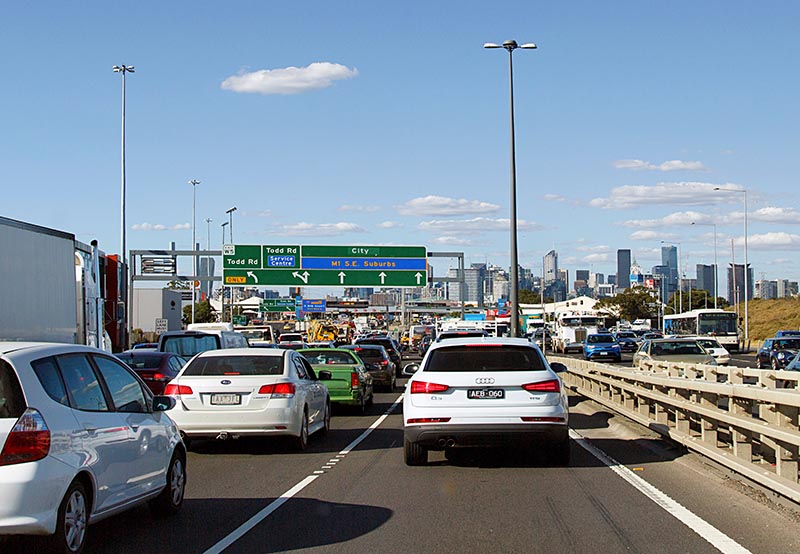
Australia enforces new CO2 standards for light vehicles
On July 24, 2020, Australia’s automotive industry introduced a voluntary code for carbon dioxide (CO2) emissions reductions. In the absence of federal regulations, and continuing to lag global best practice, the Federal Chamber of Automotive Industries (FCAI) Voluntary CO2 Emissions Standard set out industry and brand CO2 reduction targets to 2030, based on a sales-weighted average mass per unit.
The FCAI is an industry organisation that represents the Australian motoring industry. From 2021, the FCAI committed to publishing an annual “public scorecard” detailing the emissions performance of major automotive brands in Australia.
A voluntary standard established by automakers is noble and it acknowledges the advantages of CO2 standards for consumers. However, the move was met with skepticism due to the absence of compliance measures, such as financial penalties. At the time, the Australian Automobile Association expressed doubts about the ability to achieve targets beyond “business as usual,” particularly given Australia’s preference for gas-guzzling vehicles like the Ford Ranger and Toyota Hilux utes. A carrot-and-stick approach is usually required to ensure widespread compliance with such measures.
Australia is the 13th largest vehicle market in the world. For years, there has been wrangling over the introduction of mandatory standards comparable to those in the European Union (EU), the U.S., and other major markets. The EU, for instance, introduced mandatory CO2 standards for new passenger cars in 2009, with an initial fleet average target of 130 g/km, by 2015. Australia’s closest neighbour, New Zealand, introduced greenhouse gas emissions standards for light-duty vehicles in 2022, with the Clean Car Standard.
On May 31, 2024, the Australian Government finalised the first-ever CO2 standards for light vehicles, a collaborative effort between the auto sector and the Albanese government. This landmark regulation aims to propel Australia towards its 2050 decarbonisation target. It is expected that the standard will transform the car market by the end of the decade, offering a wider array of energy-efficient vehicles, reduced fuel costs for consumers, and, most importantly, lower emissions.

The New Vehicle Efficiency Standard (NVES) Act 2024 introduces annual gCO2/km emission targets for new passenger cars, SUVs, utes and vans from 2025 to 2029. These targets will be enforced from January 1, 2025, with progressively tighter standards each year until 2029.
In June, a Policy Brief from the International Council on Clean Transportation (ICCT), an independent, non-profit research organisation, highlighted average annual emissions reductions of 16% for passenger vehicles and 12% for light commercial vehicles over the next five years. Regulatory impact analysis suggests these measures could lead to a cumulative reduction of 20 million tonnes of CO2 emissions in Australia by 2030.
The benefits of NVES outweigh the costs. Total benefits are estimated at AUD126.6 billion (USD84.7 billion), including AUD95 billion (USD63.5 billion) in fuel savings for consumers and AUD5 billion (USD3.3 billion) in public health. According to the ICCT report, total cost of compliance is estimated at AUD40.6 billion (USD27.1 billion). A reduction in annual fuel costs for consumers of AUD1,000 (USD669) by 2029 is anticipated. In support of these efforts, the Australian federal budget has allocated AUD84.5 million (USD56.5 million) to establish regulatory requirements and facilitate credit trading between manufacturers.
This initiative complements the national electric vehicle strategy, released on April 19, 2023, the same day consultation on the new fuel efficiency standards commenced. Additionally, the Federal Government recently confirmed that all new cars and light commercial vehicles must meet Euro 6 emission standards by December 2025.
NVES sets “headline targets” for passenger vehicles with a gross vehicle mass of up to 3.5 tonnes at 141 g/CO2/km starting from 2025, decreasing to 58 g/CO2/km by 2029. For light commercial vehicles up to 4.5 tonnes, targets begin at 210 g/CO2/km in the initial year and progressively tighten to 110 g/CO2/km. However, individual vehicle targets are calculated based on the vehicle’s mass in running order (MIRO) using a linear mass adjustment curve, which is constrained by lower and upper mass breakpoints.
A AUD100 (USD66.5) fine for every gram of CO2 per km emitted over the limits applies to every car sold. NVES allows for the banking and trading of compliance credits, effective from July 1, 2025. Compliance values of all vehicles registered by manufacturers are calculated at the end of each calendar year. Credits can be banked for up to three years after their year of issuance and can be applied to future targets. Debits must be cleared with credits within two years of their issuance.
The legislation is expected to deliver a welcome shift in the trajectory towards Australia’s stated net-zero ambitions. However, the ICCT document noted that the limits are generally weaker than comparable vehicle markets such as Canada, the EU, New Zealand, the UK, and the U.S.—with the standards starting at much higher emissions levels. Limits under NVES align with U.S. NEDC-equivalent targets for passenger vehicles by 2028, although the targets for light commercial vehicles remain consistently lower.

The ICCT report raised concerns that almost 20% of SUVs are not regulated under the passenger vehicle (PV) class in Australia. It noted a very real risk of a shift towards heavier SUVs, which could dilute the effectiveness of the standard. A similar vehicle classification exists in the U.S., where the share of truck-based SUVs increased from 2% in 1975 to 44% in 2022, leading to higher fleetwide fuel consumption and emissions. In contrast, Europe and China regulate all SUVs as passenger vehicles.
Australia’s new regulations are set under the New European Driving Cycle (NEDC) test procedure. The NEDC is considered less effective than the Worldwide Harmonized Light Vehicles Test Procedure (WLTP) because it is based on outdated driving patterns and does not accurately reflect modern driving conditions. It tends to underestimate fuel consumption and emissions. There is a vision to switch to the more representative WLTP, with suggestions that it will be implemented to meet the Euro 6d requirement for criteria pollutants emission standards.
The Euro 6d emission standards are a set of stringent regulations aimed at reducing pollutants from vehicles to improve air quality. These standards set specific limits on various pollutants emitted by both petrol and diesel engines. For diesel engines, the limits are set at 80 mg/km for nitrogen oxides (NOx), 500 mg/km for carbon monoxide (CO), and 5 mg/km for particulate matter (PM). For petrol engines, the standards are slightly different, with limits of 60 mg/km for NOx, 1,000 mg/km for CO, and 5 mg/km for PM.
These regulations are part of a broader effort to curb air pollution from vehicles, ensuring that emissions are significantly reduced. The Euro 6d standards require vehicles to undergo real-world driving emissions (RDE) testing, which means that the emissions are measured under actual driving conditions, not just in controlled laboratory settings. This approach is designed to provide a more accurate representation of the vehicle’s environmental impact.
An initial review of the NVES regulation is planned for 2026, during which targets for 2030 to 2035 are expected to be considered. ICCT highlighted the need for more ambitious targets for 2030 to 2035 to align with other major markets, with 0 gCO2/km or 100% zero-emission vehicle sales required by 2035, at the latest, to align with Australia’s 2050 decarbonisation goal.








